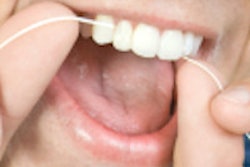
In my professional experience, the most frustrating thing for dental professionals has always been patient compliance -- or should I say noncompliance. As dental professionals, we often look at noncompliance as a lack of concern or accountability by our patients. After all, one would think that people would want to take responsibility for their personal actions and have a genuine interest in their oral health, right? Amazingly, I've learned that this is not always the case.
I have spent a decade in the clinician's chair confused, frustrated, and overall disappointed at the lack of concern some patients seem to have for their own oral health. What makes the compliant patient different from the noncompliant patient? I graduated from dental hygiene school in 2004, ready to help the world with a very powerful message and prevention motto: Only brush and floss the teeth you wish to keep ... because there truly is no replacement.
Since then, I have learned many things, including the fact that (shockingly!) not everyone values teeth the way I do. This has raised several questions in my mind. Is their lack of concern a failure on my part? Am I a bad teacher? Is my patient a bad student? I don't believe any of these is the reason. The bottom line is that people respond to things they feel are important, and if a patient does not feel that his or her oral hygiene is important, it will be difficult to motivate change.
Let's reflect on the term "compliance." By definition, the word means "the act of conforming, acquiescing, or yielding, (2) a tendency to yield readily to others, especially in a weak and subservient way, (3) conformity; accordance: in compliance with orders, (4) cooperation or obedience."
Interpretations will likely vary, but I can see how the term compliance can be viewed as negative. The world is full of big personalities, individuals, leaders, and trendsetters, so maybe the word compliance should be removed from our verbiage.
Think about the topic of bleeding. How many of you have told a patient, "You have moderate to heavy bleeding," and the response is, "My gums always bleed when I brush or floss (or sometimes even eat), but that is normal." I am guessing all dental professionals have heard something like this. Why is it that our patients feel it is normal to have bleeding gums? When I have a patient in the chair and there is bleeding, I actually say, "Your gums are hemorrhaging," because the term "hemorrhage" suggests there is a problem.
The flossing challenge
For years I found it incredibly difficult to motivate my patients. I struggled with the notion that they did not want to take care of their oral health. And over the years, instead of becoming frustrated and defeated, I challenged myself to become a great motivator by uncovering their wants and needs.
Let's consider the perpetually frustrating topic of flossing. I eventually got to a point in my clinical profession where I would not floss my patients' teeth at the end of an appointment. When I sat them up in the chair, they would ask, "Are we done? Aren't you going to floss my teeth?" Though I probably shouldn't admit this, I would respond, "Why do you feel it is necessary for me to floss your teeth this one time today, when you don't floss them any of the others?"
There is no valid excuse for not doing something, other than you just don't want to. Money, time, availability, dexterity, life, etc., are not valid reasons to disregard the things we know are needed to take care of our bodies.
If a patient shows up for an appointment and says he or she doesn't floss because it's difficult, I have a slew of options to discuss. I am not only going to teach patients how to floss properly because I believe flossing is the very best thing for them, I am going to find out what motivates them to adopt this habit. When my patient is a 6-ft male with hands four times the size of mine, I am going to find out if getting those fingers to reach the posterior region to floss properly is even an option for him. If it isn't, I'm not going to continue talking about flossing with string floss. I am likely going to suggest another option, such as the Philips Sonicare AirFloss.
Another common scenario in our profession is the "aggressive brusher." For years, I have been using and recommending power toothbrushes, in the hope that my patients would halt gingival recession. It never occurred to me that there needed to be a bit of instruction. What happens when you recommend a product to someone with improper instruction or follow-up? Chances are they will use it improperly and will not be satisfied with their results.
Since learning this, I always show an instructional video on how to properly use these products, and I always recommend holding a power toothbrush in a person's nondominant hand, or better yet, holding it like a flute. What is the significance? A product used correctly results in patient compliance, which leads to my personal satisfaction as a dental professional because I get to see a healthy mouth at every appointment!
Asking the right questions
Thus far I am doing well. I have my patients brushing correctly, cleaning interproximally, and taking the proper steps to reduce biofilm and bleeding. So why, when I see these patients on recall appointments, do I still notice areas of buildup and extrinsic stain? My thoughts begin with the idea that they stopped using the products, but I soon find that is not the case because they tell me they still love and use them. My second thought is they are not correctly angling the brush head toward the gum line. But upon asking them to show me their technique, that is not the case. Confusion and frustration begin to set in again. I suggest various products, ranging from antimicrobial rinses to tartar control pastes, and send them on their merry way.
Sometimes, the next recall appointments roll around and I notice even more buildup and stain, but my patients claim to still be using their power toothbrush. They will often go on and on about how much they love the way it makes their mouths feel and how it has been a great purchase decision. Suddenly a lightbulb goes on in my head and I ask, "Where are you getting your replacement brush heads?" Not to my surprise, patients reply with, "I am using the brush head that came with the brush," which they purchased one year ago.
This was not a case of patient noncompliance; it was a lack of information on my part. As dental professionals, I feel we sometimes overlook the small details because they are second nature to us. According to the ADA, we should replace our brush heads every three months, but sometimes it is these simple steps that we fail to mention to our patients.
I hit this topic heavy with all of my patients, and I present it as simply "protecting your investment." When we purchase a car, we need to protect that investment with routine maintenance, such as oil changes, tire rotations, belt replacements, etc. The tools in which we invest to care for our mouths and overall health are no different. The topic of brush heads is one I always mention to my patients now, whether they use a manual brush or a power toothbrush, and every time they come to my office, each patient receives a two-pack that will suffice for replacements until the next appointment.
So the next time patient compliance becomes an overwhelmingly frustrating situation for you, think motivation and bag of tricks. The dental profession has a large bag of tricks and products at our fingertips, and finding what meets our patients' needs, as well as our own, can make a world of difference when it comes to compliance. Make it personal when discussing options during an appointment. Always ask questions, as it tends to be the most helpful way to uncover a solution. Never just comply.
Monica Spannbauer, RDH, MBA, is manager of professional education, Western Region, for Philips Consumer Lifestyle.



















